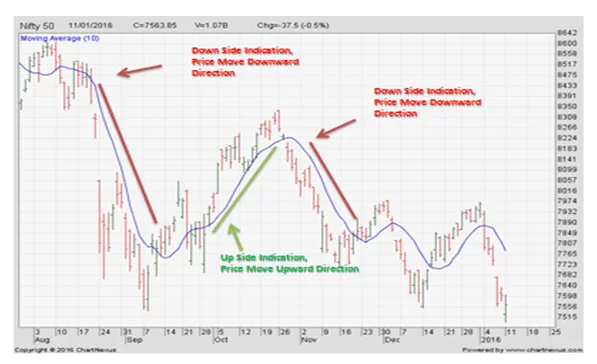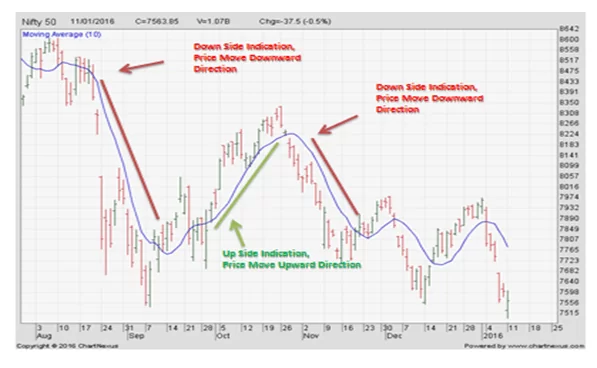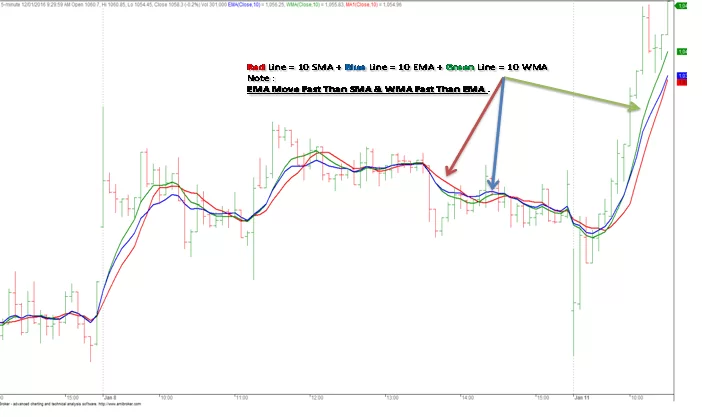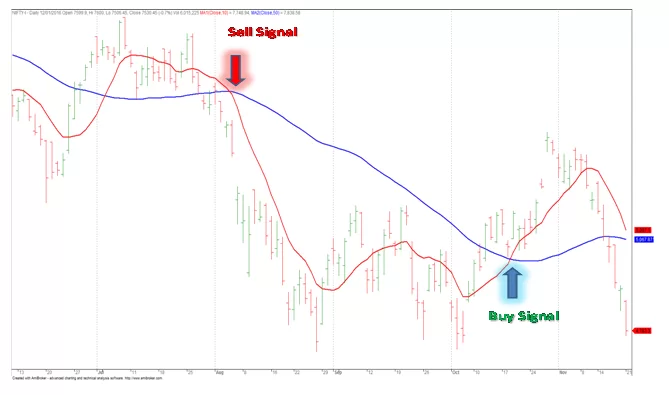Different types of Moving Average
Simple Moving Average (SMA)
It is simply the average price of a security at a given period of time. Usually, these are calculated using closing prices. The sum of closing prices for the last ten days divided by ten is the Moving Average of that security. Naturally, as its name implies, the moving average moves or changes with the price movement.
Let us now study an example of a ten day simple Moving Average calculation:
Assume the Closing prices of a security as: 1, 2, 3, 4, 5, 6, 7, 8, 9, 10, 11, 12, 13, 14, 15. Now,1st value of 10 day SMA (Simple Moving Average) will be:
1+2+3+4+5+6+7+8+9+10=55/10=5.5
2nd value of 10 day SMA (Simple Moving Average) will be:
2+3+4+5+6+7+8+9+10+11=65/10=6.5
3rd value of 10 day SMA (Simple Moving Average) will be:
3+4+5+6+7+8+9+10+11+12=75/10=7.5
4th value of 10 day SMA (Simple Moving Average) will be:
4+5+6+7+8+9+10+11+12+13=85/10=8.5
5th value of 10 day SMA (Simple Moving Average) will be:
5+6+7+8+9+10+11+12+13+14=95/10=9.5


Though different chartists have different explanations about moving average, everybody agrees on one point. It is about the point of moving average slope. In case the slope is up, then the trend will be up. Traders can expect upward price movement and vice versa.




